Deep space reveals its secrets
Researchers of the Jet Propulsion Laboratory for a long time lost their quiet rest. Excited by discoveries, they slept in fragments, and when they woke up, they again hurried to the Flight Control Center of the automatic interplanetary station "Voyager". Here, with fabulous speed, digital machines operated, transforming thousands of bits of information, twisted by cosmic and atmospheric disturbances, into television shots, slender graphics and endless rows of numbers. People with bated breath were looking at the screen color images of the approaching Saturn.
33 million kilometers Remained space scout to the planet. 4 of the year has passed since its launch at the cosmodrome, and the long road stretched behind Voyager for 2 a billion kilometers. Safely crossed the dangerous asteroid belt with its endless streams of meteoritic bodies. Fragile electronic devices withstood the brutal cold of world space and electromagnetic storms in the vicinity of the largest planet of the solar system - Jupiter.
And ahead? The risk of collisions with stones and floes near Saturn, before Voyager sets out on its 8-year flight to the most distant planets, Uranus and Neptune.
... Before the eyes of those who were in the Control Center, a grandiose picture appeared. Saturn, topped with a huge “necklace”, already occupied almost the entire frame of the television image. A golden-yellow planet with greyish hats of the poles and motley belts barely visible in the fog swept and spun in the black abyss of the sky.
Researchers fix their eyes on the famous rings of Saturn, which have been haunting astronomers for several centuries.
The great Galileo was the first to notice something strange about the appearance of Saturn. The telescope of Galileo was too weak, and the scientist thought that Saturn had handles, like a sugar bowl. Only half a century later, Christian Huygens proved that strange semicircles on the sides of the planet are nothing but thin, but very wide rings.
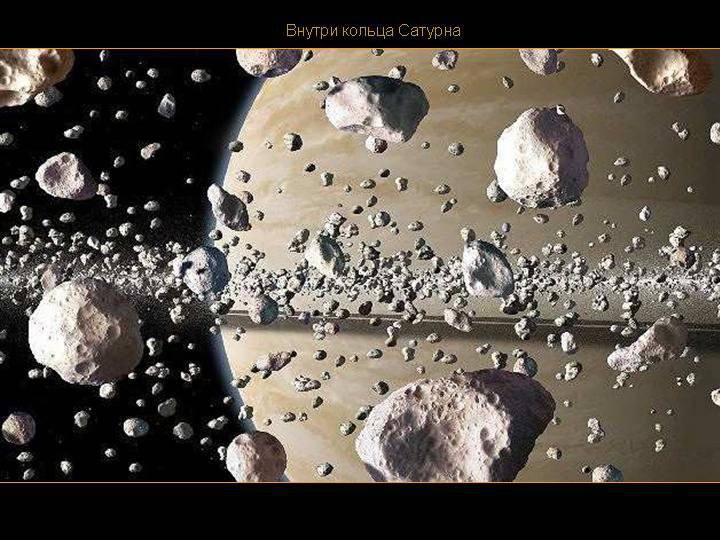
Distance to the planet 33 million kilometers. On the screen are three rings of Saturn, long opened with the help of telescopes: A, B, and C. However, in the frames of space imagery, one can notice something that is impossible to see from Earth. First of all, the complexity of the structure of the rings and their amazing color.
The largest ring - the outer one - sparkles in silver, the middle one is slightly reddish, and the inner one is dark blue, it is translucent, precisely made of thin, barely tangible matter.
8 million kilometers. On the television image fits only the fourth part of the hemisphere of Saturn. On the side of the planet, two moons closely nestled against each other — Tethys and Dion. But scientists are aggressively returning to the study of rings. Not three, but seven rings embedded in one another are viewed. Here they are, newly discovered: F is outside the old A, G is outside the new F, E is the widest ring furthest from the planet, D is the closest to Saturn.
But what is it? Comparing the photos, specialists see that each of the large rings is divided into many narrow barely noticeable "hoops". On one photo they counted 95! Even in the black “failure” width of 4 thousands of kilometers between rings A and B, which was always recognized as empty, scientists counted dozens of thin “hoops”.
2 million kilometers. The Voyager instruments are aimed at the rapidly approaching Titan, Saturn’s largest satellite. In size, it surpasses the planet Mercury. The arousal of astronomers is easy to understand. Titan is the only satellite in the entire solar system that has a powerful atmosphere, which is 10 times thicker than Earth. “Voyager” flew past Titan at a distance of 6,5 thousands of kilometers - 60 times closer than the distance from Earth to the Moon. And yet, scientists saw little on the screen - prevented by a thick fog of the atmosphere of Titan, similar to chemical smog.
1 million kilometers. On the screen, dazzling bright Ray - the second largest moon of Saturn. It is all pitted with craters - continuous space bombardment lasted billions of years. Another satellite gleaming in the velvet blackness of the cosmos came into view of the camera. This is Diona, which, more than any other object of the Saturn system, resembles our Moon, only the “seas” on Dion are covered with not frozen lava. Everywhere visible water ice, durable, like a stone. A network of white “harnesses” speaks of places where the water that had escaped from the depths instantly froze, embraced by the bitter frost. The surface temperature of Dione minus 180 ° С - here the sun shines 900 times dimmer than in Earth orbit.
Before the eyes of researchers sailing the previously unknown satellite Saturn-12 (S-12). Surprisingly: it is in the same orbit as Dion. In this case, the S-12 always flies ahead of Dione at a distance 1 / 6 of the orbital circle. In celestial mechanics, such a phenomenon is called orbital resonance.
300 thousand kilometers. Soon a date with Saturn. From the left side of the scout, as if welcoming his arrival, Mimas appeared. He has a strange look. Billions of years ago, this satellite collided with a large celestial body - an enormous force the explosion tore out so much ice and stone from the body of Mimas that a crater was formed with a depth of 9 and a width of kilometers in 130. The crater occupies the fourth part of the satellite hemisphere!
101 is a thousand kilometers. At such a distance, a giant planet and a messenger of Earth met and dispersed. Saturn is so great that in the closest clocks, only a small portion of cloud cover could be seen in the frame of the television image. Everywhere impervious to the clouds of yellow-brown color. Among the fluctuating white stripes, whirlwinds and halos, some blue-green spots run, the size of Greenland or Australia — these are “windows” through which gas whirlwinds penetrate from the depths of the planet.
Of all the planets of the solar system, Saturn is inferior in size only to Jupiter. Inside it would be enough space for three hundred globes. But the average density of a giant is very small - if somewhere there was a fantastic endless ocean, then Saturn would float on its surface like a cork.
According to a new model created using Voyager instruments, the planet appears to us to be a flattened ball of hydrogen and helium at the poles. The powerful gas envelope of Saturn, with increasing pressure, moves closer to the center in a liquid state. Liquid planet to the very core!
And what about a hard core? It is as large as the Earth, but has a mass 15-20 times as large. The density of matter in the center of the planet is so high, where the pressure is 50 of millions of earthly atmospheres! And temperature + 20 000 degrees! The liquid ball is boiling, and in the upper tier of the clouds of the planet reigns a fierce cold. How does this huge temperature difference arise? With the vastness of the bowels of the planet and its colossal gravity, gas flows take hundreds of years to transfer the heat of the depths to the upper clouds of the atmosphere of Saturn.
Strange rain
Saturn radiates three times more energy into space than it receives from the Sun itself. First, heat is created due to the gradual compression of the gas giant - its diameter is reduced by millimeters per year. In addition, Saturn has another fantastic source of energy. The hot ball of Saturn cooled down from the very birth of the Solar System. According to astrophysicists, 2 billion years ago, at a great depth of the planet, the pressure of the subsoil fell below the critical point of helium condensation. And the rain began ... A strange rain that pours to this day. Drops of helium fall on many thousands of kilometers in the thickness of liquid hydrogen, and friction arises and thermal energy appears.
Stormy weather
Under the influence of the rapid rotation of the planet (any point on the equator of Saturn moves 14 times faster than at the equator of the Earth) in the mysterious world winds of monstrous force blow - in one place the Voyager equipment recorded the speed of clouds 1600 km / h. How do you like such a refreshing breeze?
Camera lenses "Voyager" slide into the southern hemisphere of Saturn. Suddenly, an oval spot about ten thousand kilometers long appeared on the screens of the Flight Control Center - a copy of the Great Red Spot on Jupiter. Inside the spot can freely fit the planet Earth. But this is just a raging atmospheric vortex in the atmosphere of Saturn, which has no end.
Accident
The Voyager continued its flight past Saturn, when the radio connection suddenly ceased. Scientists did not worry - according to the calculations, the device disappeared into the "radio shadow" of the planet. When the scout "emerged" from the back of Saturn, the situation became really serious. The jamming mechanism of the turntable with the instruments was wedged. Is it really not possible to photograph the night side of the planet? It is a pity that due to a technical malfunction it is necessary to cancel the scheduled meeting with large satellites - Enceladus and Tefiya.
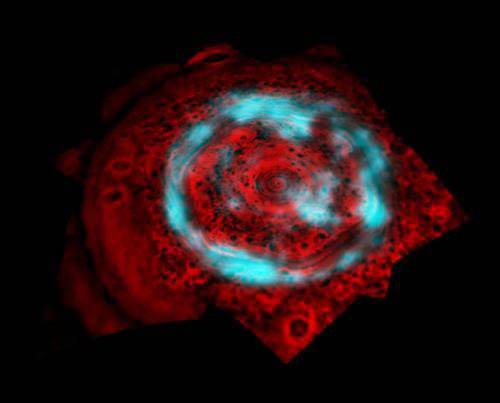
Signals from an onboard computer of an interplanetary station poured from the Control Center. The control over the repair of the mechanism was complicated by the space distance - the delay time of the radio signal between the Earth and Saturn is 1,5 hours. In the end, the Voyager digital brain unlocked camera-pointing drives, but time was lost and a close acquaintance took place only with Tefiya.
When the device was already moving away from Saturn at a speed of 22 km / s, scientists saw an electrical storm in Saturn's rings. Lightning, illuminating the shadow side, threw red reflections on the night clouds of the planet ...
Final of the space play
The events described above took place in 1980-1981, when two automatic interplanetary stations Voyager-1 and Voyager-2 flew past Saturn. To avoid repetition, I decided not to talk about them separately - all news about the Saturn system, transmitted to Earth by two vehicles, conditionally “nested in the mouth” of one under the name “Voyager” (without a number).
It is getting a little offensive, from the realization that after three decades, our space technology has remained at the same level.
Every night, when the sun goes down and the darkening sky is covered with a scattering of stars, we see the cosmos. Space exploration requires a fantastically sophisticated technology, created on the basis of advanced achievements of rocket production, electronics, nuclear technology and other high-tech branches of science and technology. Therefore, flights of interplanetary probes, despite their seemingly unrealistic and lack of any practical benefits, require the solution of numerous applied tasks: the creation of powerful and compact energy sources, the development of technologies for long-distance space communications, the improvement of structures and engines, the development of new methods of gravity maneuvers, . h. using Lagrange points. All this front of research can become a “locomotive” of modern science, and the results obtained can be useful in solving more pressing problems. And yet, most problems remain unresolved.
All modern timid attempts to explore the outer planets (Ulysses, Cassini, New Horizons missions) are all based on the same technologies and developments that were used in the Voyager project. For 30 years, not a single new type of engine was created suitable for interplanetary flights. For example, the ion engines of the Japanese research probe Hayabusa, which are presented as an ultra-modern high-tech, in fact - well-forgotten developments of the mid-twentieth century - ion engines were widely used in the orientation systems of the Soviet meteorological satellites "Meteor". Secondly, ionic engines are a rather specific means: they have really amazingly low fuel consumption (a few milligrams per second), but, respectively, they create cravings of a few millinewtons. It takes many years to accelerate a spacecraft and in the end there is no real benefit.
Ordinary liquid jet engines (LRE), moreover, they are very voracious - their work is limited to tens (hundreds) seconds, and other things they are not able to disperse a spacecraft to the required speed, for example, to reach Saturn’s orbit. The fundamental problem is that the gas flow rate is too low. And in no way can it be raised.
The peak of the 50-s mode - the nuclear jet engine did not develop, due to the absence of any significant advantages. Despite the unreasonable flame of a nuclear reactor, such an engine requires a working body — that is, in fact, this is a normal liquid-propellant rocket engine with all the consequences and disadvantages.
The original way to travel in space using impulses of nuclear explosions, proposed by Freeman Dyson in the 1957 year (the Orion project) remained on paper - too bold, and, frankly, a dubious idea.
The "Conquerors of Space" (here it is ironic in relation to the whole of Humanity) in the 50 years of the Space Age could not create an effective engine for moving in interplanetary space. We would never see either Jupiter or Saturn if it were not for the hint from specialists in celestial mechanics - to use the gravity of the planets to disperse AMC. "Interplanetary Billiards" allows you to reach a huge speed (15-20 km / s) and explore the margins of the solar system without using an engine. The only problem is strictly limited “launch windows” - a few days (weeks) once in several years. Without the right to the slightest mistake. Long years of flight and a few hours for a rendezvous with the object of study.
With the help of gravitational maneuvers, the Voyagers flew; according to the same scheme, the modern probe New Horizons flies to Pluto, but only for the intersection of the Solar system it will require 9 years. And then the expedition will have only one day to explore a distant planet! The probe will rush past Pluto at an enormous speed and will disappear forever in interstellar space.
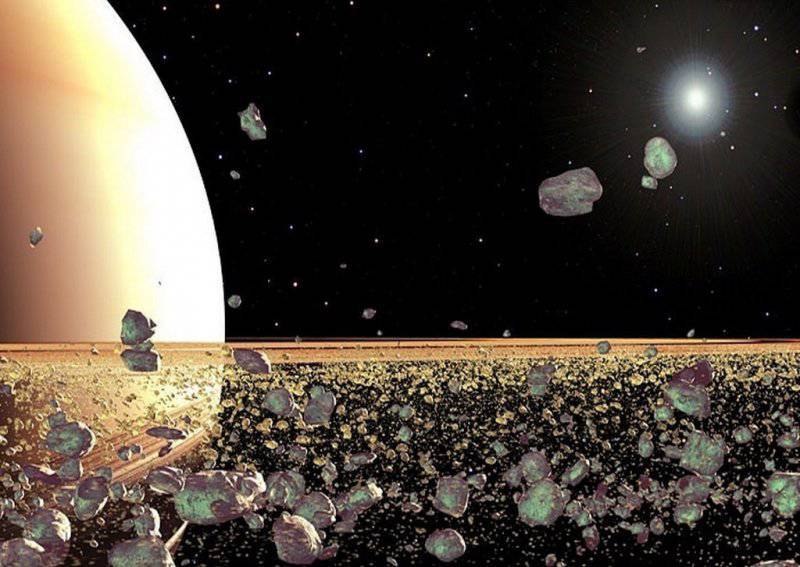
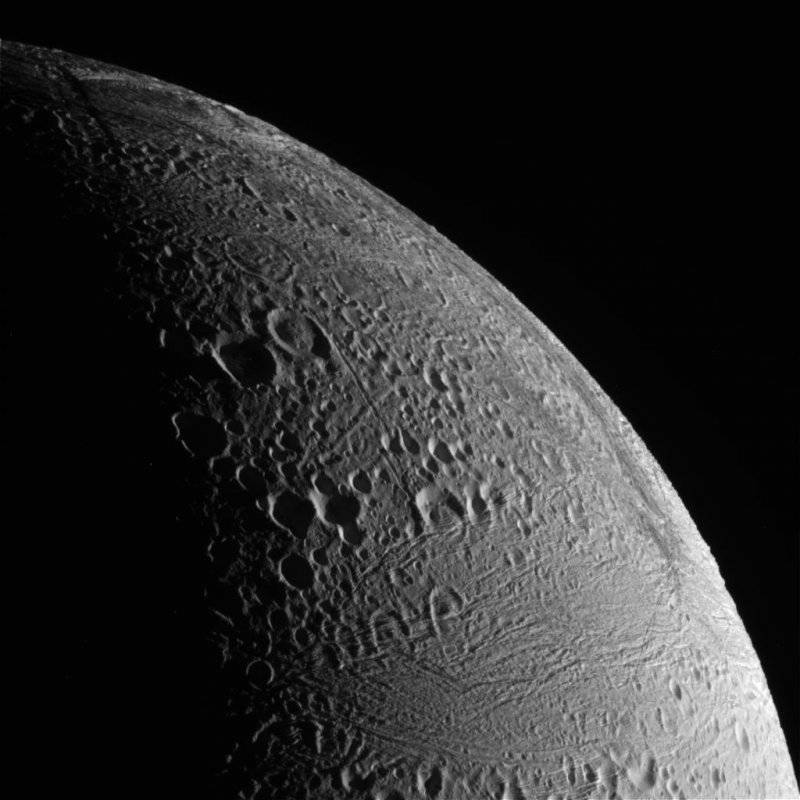
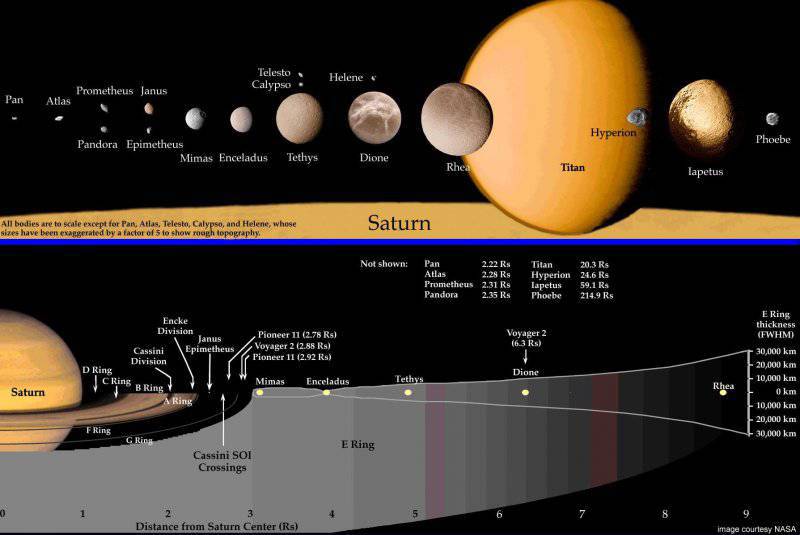
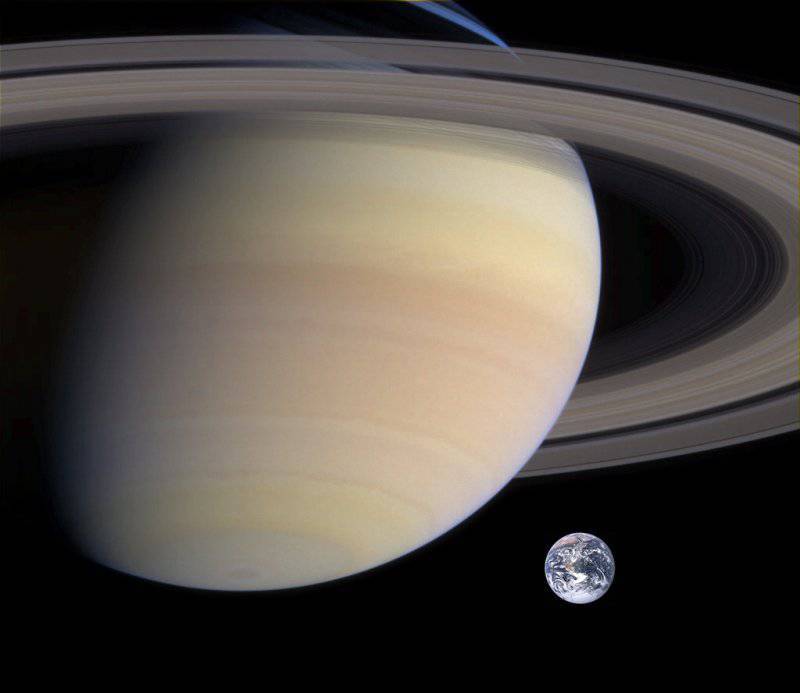
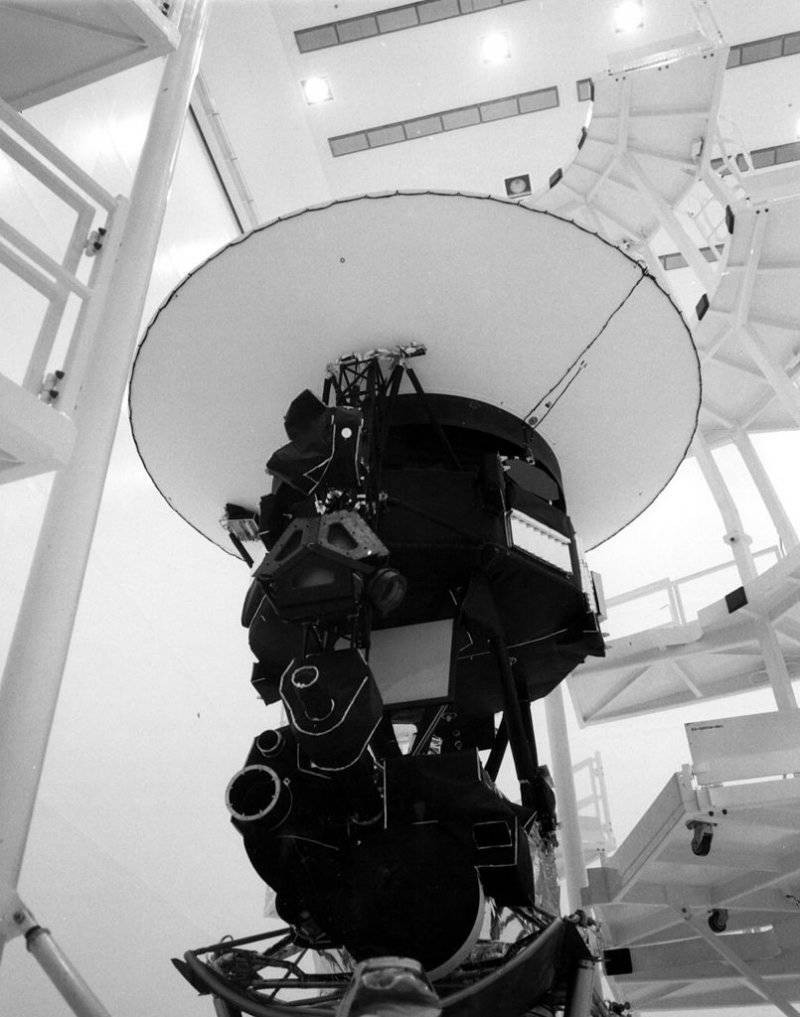
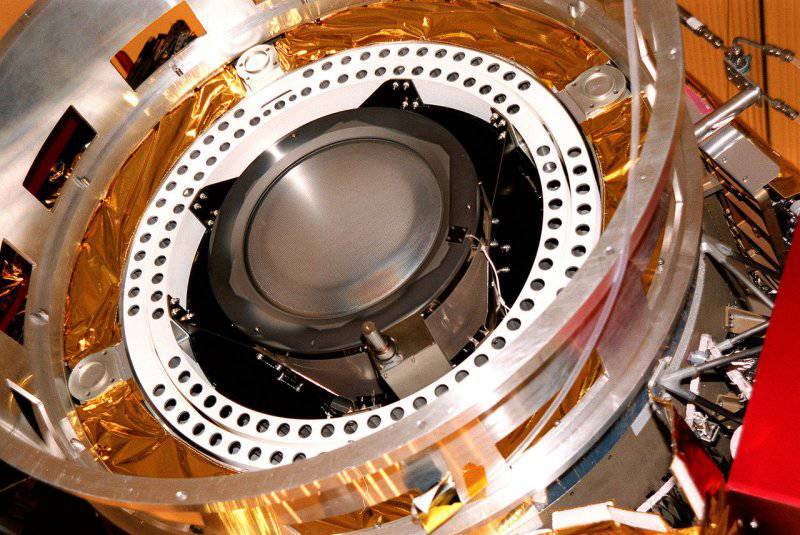
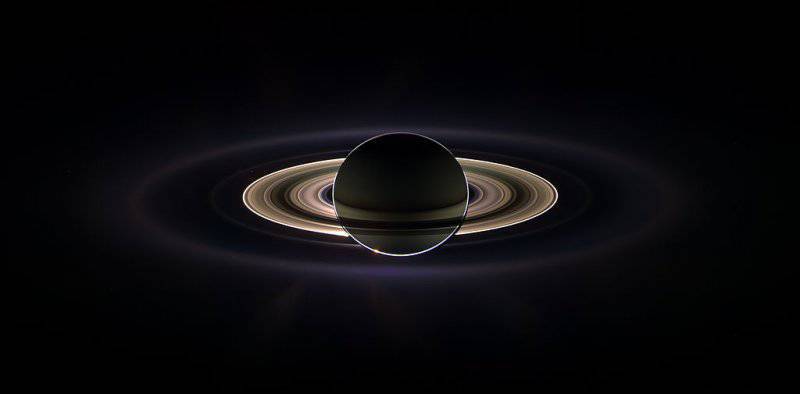
Information